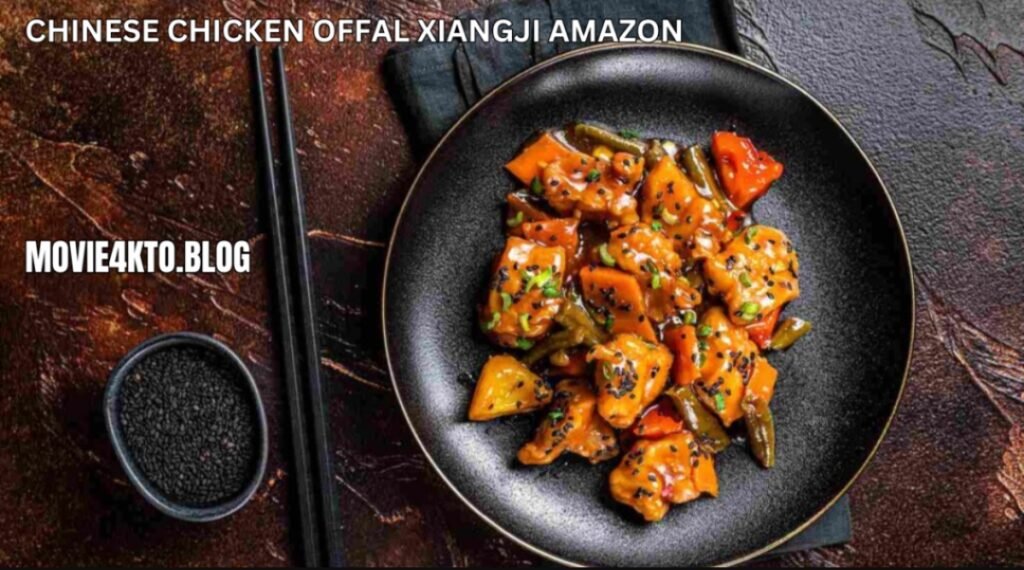Chinese Chicken Offal Xiangji: A Unique Culinary Experience

The rich tradition of Chinese cuisine extends beyond common dishes like stir-fried vegetables or sweet-and-sour pork. A shining star of this culinary treasure trove is Chinese chicken offal Xiangji, a delicacy known for its bold flavors and cultural significance. Rooted in history and flavored with spices, this dish represents the art of nose-to-tail eating, ensuring no part of the chicken goes to waste.
The Origins of Xiangji
Chinese chicken offal Xiangji is a dish that speaks to China’s culinary philosophy of minimizing waste and maximizing flavor. It originated in regions where resourcefulness in cooking was a necessity. By skillfully preparing chicken liver, gizzard, heart, and other offal, chefs turned what many might discard into a gastronomic delight.
These recipes have been passed down through generations, embodying local flavors and innovative cooking techniques. Whether served as a street food snack or a main course, Xiangji remains a beloved dish in Chinese culture.
What Makes Chinese Chicken Offal Xiangji Unique?
The defining feature of Xiangji is its robust use of spices and aromatics. Traditional preparations involve stir-frying chicken offal with ingredients like:
- Garlic and ginger: To cut through the richness of the offal.
- Sichuan peppercorns: For a numbing, spicy kick.
- Star anise and cinnamon: To add depth and warmth.
- Fermented bean paste: For an umami punch.
The resulting dish is a symphony of flavors—spicy, savory, and slightly sweet—perfectly paired with steamed rice or noodles.
Health Benefits of Chicken Offal
Beyond its taste, Xiangji offers numerous health benefits:
- High in protein: Supports muscle growth and repair.
- Rich in vitamins: Particularly vitamin A, B12, and iron, essential for energy and immune function.
- Low in carbs: Making it a great choice for those on low-carb diets.
However, moderation is key due to the high cholesterol content in chicken offal.
How to Prepare Chinese Chicken Offal Xiangji at Home
Creating Xiangji at home requires careful preparation:
- Clean and Prep: Wash the offal thoroughly and soak it in salted water to remove impurities.
- Marinate: Use soy sauce, rice wine, and a pinch of sugar to tenderize and enhance the flavor.
- Cook: Stir-fry the marinated offal in a wok with garlic, ginger, and your choice of spices.
- Finish: Garnish with fresh coriander or spring onions for a burst of freshness.
This dish is a fantastic way to showcase your culinary skills while embracing a sustainable approach to cooking.
Cultural Significance of Xiangji
In China, chicken offal symbolizes resourcefulness and respect for food. It’s often enjoyed during family gatherings or festivals, fostering a sense of togetherness. Xiangji has also gained international recognition, appearing on menus in global Chinese restaurants that celebrate authentic regional dishes.
Why You Should Try Xiangji
If you’re an adventurous eater or a fan of bold flavors, Chinese chicken offal Xiangji is a must-try. It challenges preconceived notions about what makes a dish delicious and expands your culinary horizons. Each bite tells a story of tradition, creativity, and the joy of savoring every part of an ingredient.
FAQs
What is Chinese chicken offal Xiangji?
It’s a traditional Chinese dish made from chicken offal, including liver, heart, and gizzard, stir-fried with aromatic spices.
Is chicken offal healthy to eat?
Yes, chicken offal is rich in protein, vitamins, and minerals, but it should be consumed in moderation due to its cholesterol content.
Can I make Xiangji without spicy ingredients?
Absolutely! You can adjust the spice level by reducing or omitting Sichuan peppercorns and chili.
What does Xiangji taste like?
It’s a complex blend of spicy, savory, and slightly sweet flavors, enhanced by the unique texture of chicken offal.
Where can I try authentic Xiangji?
Authentic Xiangji can be found in Chinese street food markets, regional restaurants, or made at home using traditional recipes.
How do I clean chicken offal for cooking?
Soak the offal in salted water, rinse thoroughly, and remove any membranes or fatty tissue for a cleaner taste.
Conclusion
Chinese chicken offal Xiangji is more than a dish—it’s a celebration of culinary ingenuity and cultural heritage. By embracing lesser-used parts of the chicken and transforming them into a flavorful delicacy, Xiangji stands as a testament to the power of thoughtful, sustainable cooking. Whether enjoyed in a bustling street market or recreated in your kitchen, this dish invites you to savor the essence of Chinese cuisine.






